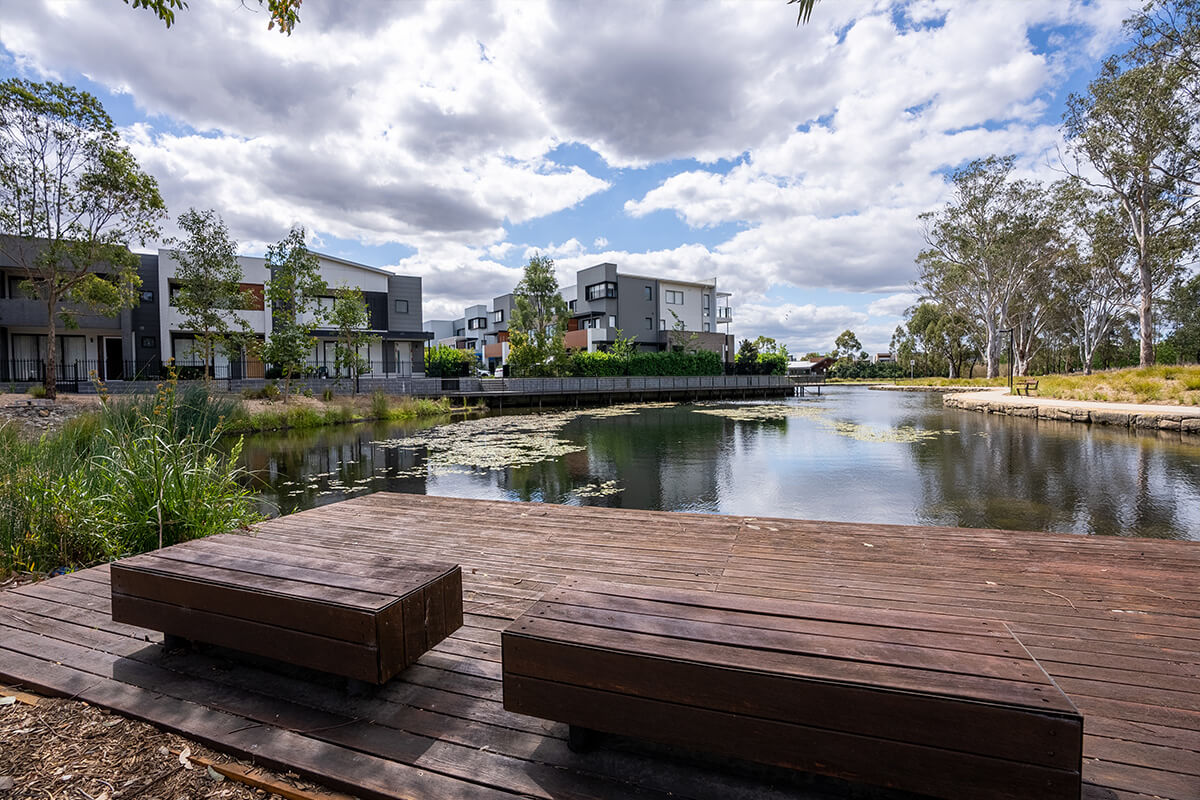While BASIX sets out minimum water efficiency standards for new homes, councils can consider complementary controls to encourage greater use of sustainable water sources and water-sensitive urban design to retain water in the landscape and enhance cooling.
The BASIX standards
BASIX is part of the State Environmental Planning Policy (Sustainable Buildings) 2022 (the Sustainable Buildings SEPP). BASIX water standards for residential development require new homes to use up to 40% less drinking water than average homes. Large commercial developments must meet a 3-star NABERS water rating.
Efficient and sustainable water use
Planning controls can be used to encourage access to sustainable supplies of water. This includes promoting the use of rainwater, harvested stormwater and recycled water for both residential and non-residential development.
Examples
- Rainwater harvesting for residential development: Section 2.1, Rainwater reuse tanks for minor developments in Willoughby Development Control Plan 2023 Part I – Stormwater management promotes installing rainwater reuse tanks by reducing the requirement for other on-site water detention methods if tanks are in place.
- Alternative water supplies for non-residential development: Section 4.3, Water conservation in the Blacktown Development Control Plan 2015 Part J requires industrial and business developments to supply 80% of their non-potable demand using non-potable sources. Rainwater is the primary source, supplemented by recycled water. When this threshold cannot be met, the plan requires that the use of non-potable sources is maximised, and these cases are considered on a merits basis by council.
- Recycled water: Planning controls can require new buildings to be built to connect to a current or future recycled water systems. This will ensure that new buildings are ready to switch to recycled water when this becomes available in the area. Section 9.8.2, Dual water systems in Parramatta Development Control Plan 2023 Part 9 – Parramatta City Centre requires new development to install a dual water or reticulation system to support the immediate or future connection to a recycled water network.
Water-efficient irrigation
Consider addressing urban heat through controls that minimise impermeable surfaces and encourage the efficient irrigation of trees and vegetation. Ideally, irrigation should use alternative water supplies.
Examples
- Western Sydney Aerotropolis Phase 2 Development Control Plan section 2.5.2, Mitigating Urban Heat Island Effect requires private open spaces to be irrigated using harvested stormwater, with 50% of grassed areas and 100% trees irrigated.
- Penrith Development Control Plan 2014 (PDF) C14 Urban Heat Management 1.5 Irrigation requires development not covered by BASIX to provide drip or passive irrigation to private vegetated landscaped areas using a sustainable supply of non-potable water.
Retaining water in the landscape
Consider encouraging the use of design elements that retain water in landscapes to support cooling and evaporation. These features should not be dependent on potable water.
Examples
- Penrith Development Control Plan 2014 C14 Urban Heat Management 1.6 Cooling with water encourages developers to consider and incorporate features such as fountains, bird baths and water-play areas to store water in the landscape.
